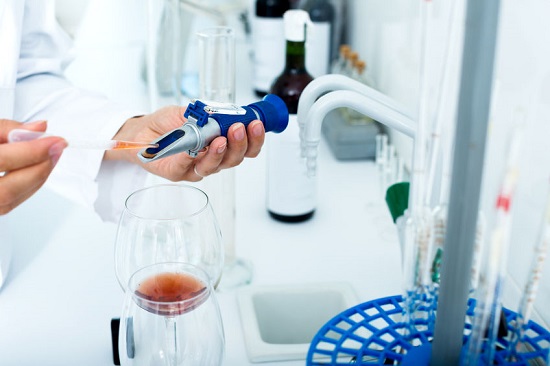The Chemistry of Wine: Fermentation


By Maureen McKenna, Certified Sommelier, CMS
Wine 101
For thousands of years, wine has played a big role in many cultures, starting with the oldest-known winery in Armenia discovered in 4100 B.C. through the Greek, Roman and Egyptian empires all the way up to today. Whether it’s to raise a glass of sparkling wine in celebration or just pour one to unwind at the end of a long day, wine is often a favorite drink to fortify the mood.
Cultivation of the winemaking grape, Vitis vinefera, began in what is now Iran in the 5th millennium B.C. Today, you’ll find grapes grown in nearly every country that falls between latitudes 30 and 50 degrees north and 30 and 50 degrees south. It’s between these latitudes where you find the ideal climate for vines.
But it takes more than a good grape harvest to make wine. There are other external factors that can make or break a good yield, including the terroir (i.e. soil, climate, geography), how the grapes are harvested, the fermentation process, the maturation of the wine, and of course, the winemaker.
This article focuses on fermentation. A basic overview of the chemistry involved in that process can help with understanding this fundamental step in winemaking.
The Chemistry of Wine: Fermentation
There are two basic ingredients needed to ferment the juice of grapes into wine: sugar and yeast. Like all fruit, sugar is found naturally in grapes, with the sugar level increasing as the grapes ripen on the vine; a process in the wine-making world called veraison. Ripening can take one to two months, depending on the climate. The right balance of rain and sunshine ensures good sugar levels in the grapes. When ready, the grapes are picked and crushed, leaving the juice, known as must, for fermentation.
The second ingredient needed for fermentation, yeast, consumes the sugar in the must, and as a byproduct, it releases three components: ethanol, CO2, and heat. The CO2 and heat escape, and the ethanol remains.
The yeast needed for fermentation can be found naturally in the environment and on the grapes themselves. This natural yeast dies off, however, when grape juice reaches 4 to 5 percent alcohol by volume, before fermentation is complete.
In order to ferment the must completely, then, the winemaker adds an anaerobic (no oxygen needed), cultured yeast called Saccharomyces cerevisiae. Depending on the temperature at which must is fermented, the process can take one to two weeks.
Following fermentation, the winemaker will store the wine in various vessels, such as barrels or stainless-steel tanks, for example, for a period of time designated by local wine laws and based on the style of wine being made. During that period, harsh acids in the wine convert into softer, more palatable acids. (Some grape varieties might need a little help, so the winemaker will kickstart the process.) Once bottled, the wine may be stored for even longer to age before reaching your table.
Whether you fancy red, white, sparkling or fortified wine, fermentation is the chemical reaction at the heart of the process. It is a practice that has been honed over thousands of years, spreading around the world and surviving history to the modern-day wine-making that we enjoy today.
Sources:
The Oxford Companion to Wine, 4th Edition. Jancis Robinson and Julia Harding
Photo credit: Copyright jackf / 123RF Stock Photo







